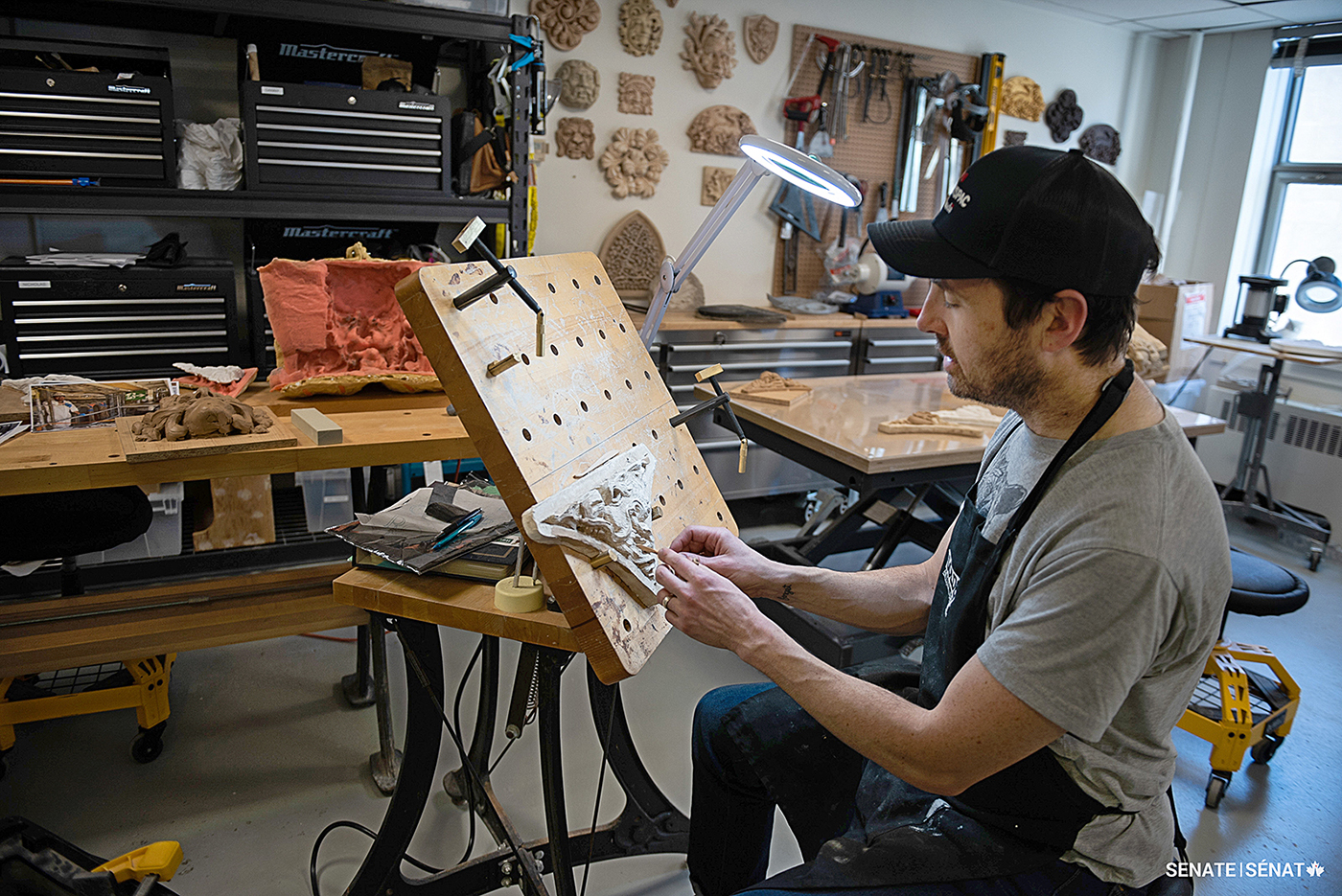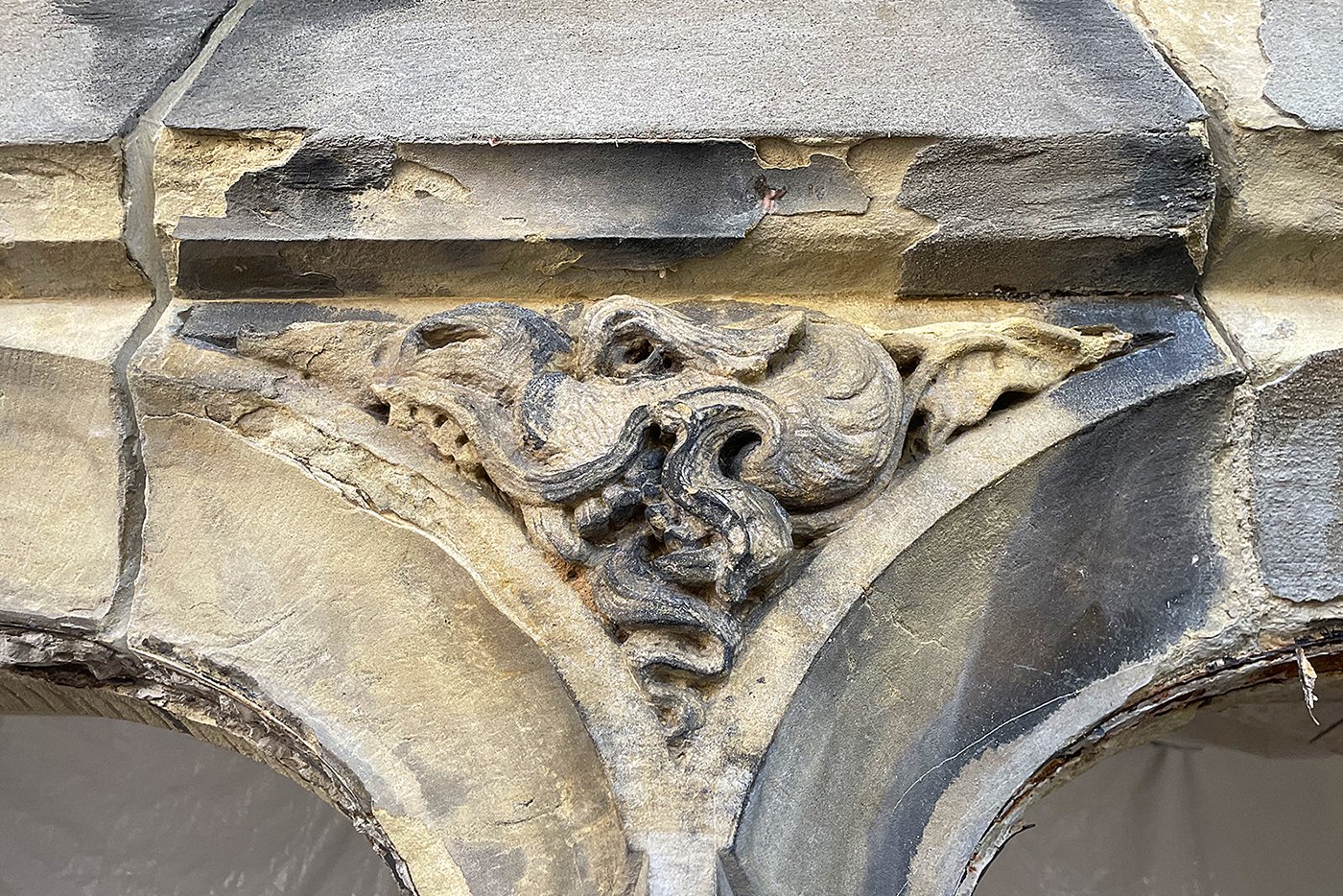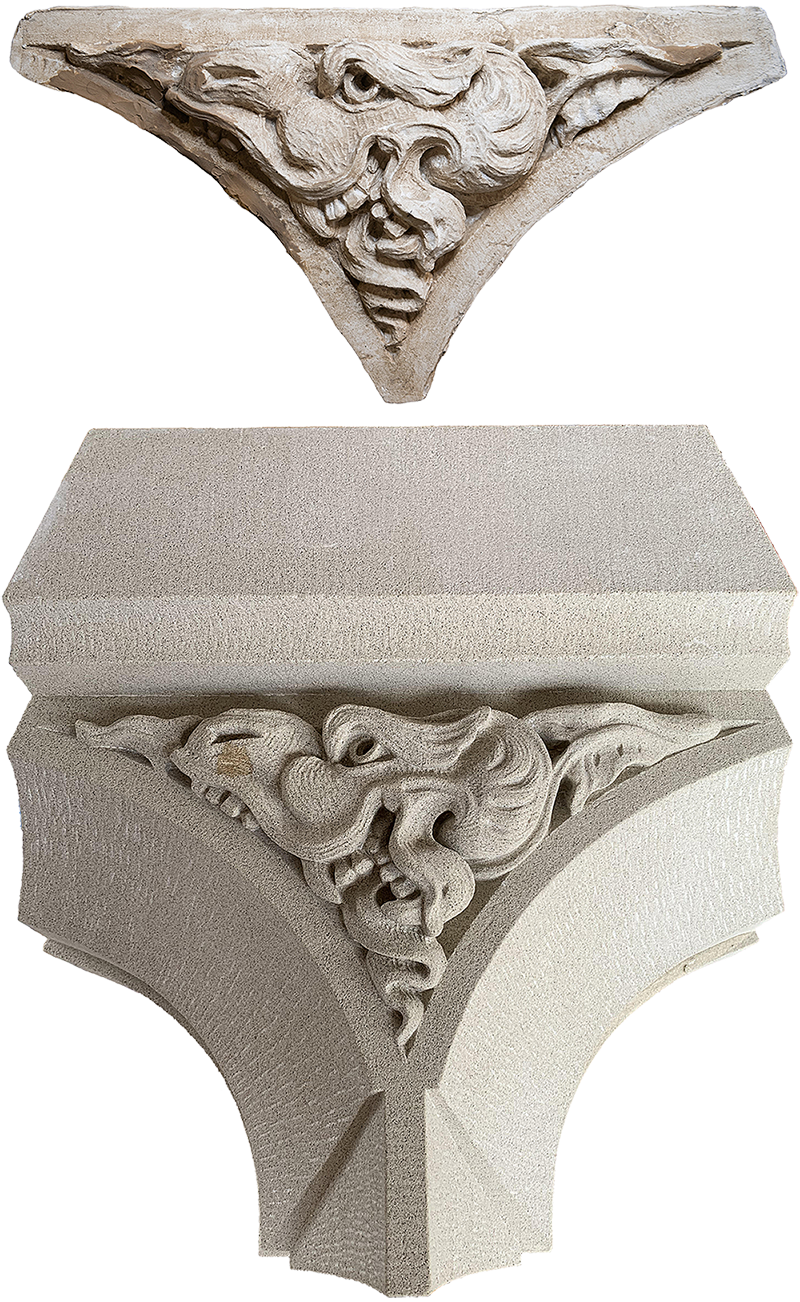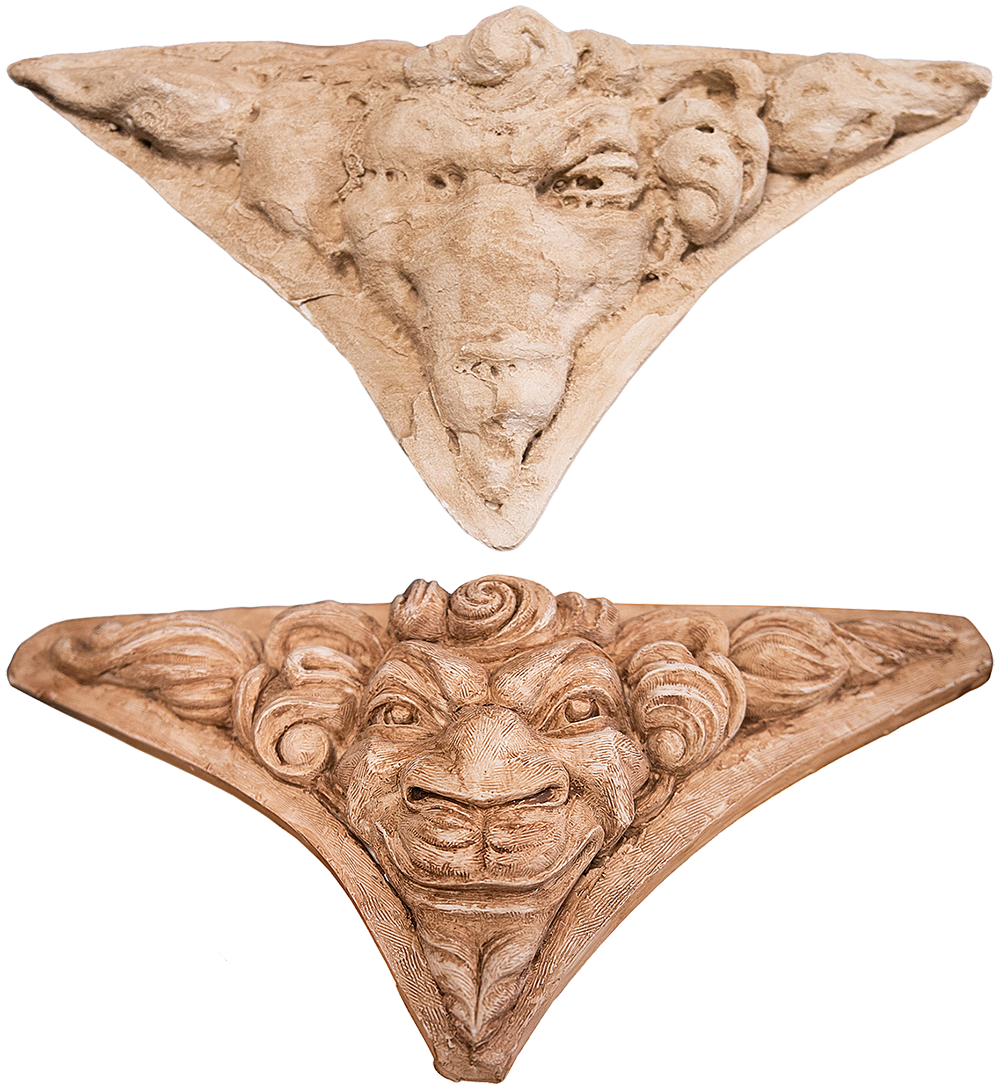Sculptors recapture ghostly faces from Centre Block’s past

In February 2019, the Senate moved to the Senate of Canada Building, a former train station built in 1912. The Senate will occupy this temporary location while Parliament’s Centre Block — the Senate’s permanent home — is rehabilitated.
Although Centre Block is shuttered for rehabilitation work, Canadians can still experience its art and architecture — as well as the Senate of Canada Building’s — through the Senate’s immersive virtual tours.
A haggard clutch of weather-beaten Parliament Hill residents is looking fresh and rejuvenated now that sculptors working on Centre Block’s rehabilitation have chipped away at the ravages of time.
The eight-person Decorative Arts Team has spent the last few months restoring a handful of crumbling and severely eroded carvings perched on the exterior of Centre Block. The damaged sculptures were identified as part of an assessment of Centre Block’s masonry and stonework that began in 2020 and is systematically working its way from the east side of the building to the west. Of the hundreds of decorative carvings that adorn the walls, towers, window frames and pinnacles of Centre Block, about a dozen so far have been singled out for repairs.
This facelift is part of the rehabilitation of Centre Block, the largest heritage restoration project in Canada’s history. This is the first time Centre Block has undergone a complete overhaul. Its mechanical, electrical and heating systems are being upgraded, and the 100-year-old building will be brought up to current fire, accessibility, security and seismic standards.

Weatherworn wardens
The grotesques re-emerging in the Decorative Arts Studio include dragons, cockatrices and goat-headed creatures straight out of a medieval bestiary, as well as comical characters that could pass for real people. One, a moustachioed man smoking a pipe, squats awkwardly, limbs splayed around his bulbous head, feet bent at impossible angles.
“It’s what you’d call an advanced yoga pose,” Team Lead John-Philippe Smith quipped.
The restoration process starts with members of the Decorative Arts Team, alongside heritage conservation and masonry specialists, mounting scaffolds to analyze each sculpture up close. Some are assessed as in need of partial repair — a fix that can be made on site. Some require outright replacement, which involves removing the piece and swapping in a new version sculpted off site.
“The deterioration we see is mainly caused by water accumulation and wind erosion,” Mr. Smith explained. “Sometimes construction flaws on sections of the building help accelerate the damage. Sometimes it’s just time and chemistry.”
A step-by-step process
Once they identify a carving for restoration, the sculptors take an impression of it on site.
Liquid silicone, brushed on in thin layers, cures to form a durable but pliable mould that captures every detail of the original. The silicone mould is encased in a plaster or synthetic-resin support, then transported to the sculpting studio where sculptors use the mould to cast a plaster copy of the carving, called a maquette.

Next, a sculptor models the missing or incomplete parts by shaping clay on top of the plaster. Sometimes the sculptor has a reference image to follow, but often it comes down to informed guesswork.
“We try to find other pieces in a similar architectural position and use that as reference to help us picture what the original looked like,” sculptor Nicholas Thompson said as he crafted the final touches on a carving of a dragon’s head.
Once complete, sculptors make a new silicone mould of this composite piece. Another plaster maquette is cast from this mould, serving as a template for the final carving in sandstone. The completed carving is then shipped to Centre Block and secured in place by masonry specialists.
Recreating what was lost
The sculptors strive to be faithful to the original, but often the damage is so extensive it’s up to the artist to interpret the original carver’s intentions.
“There’s a kind of communion with the past when you’re working on a piece like this,” Mr. Thompson said.
“It’s a joy to be part of such a rich tradition, imagining what those original sculptors were thinking and trying to achieve as they worked.”
In the months ahead, the Decorative Arts Team will begin creating new sculptures to fill some of the nearly 200 uncarved blocks that remain in Centre Block. For now, the focus is on carefully restoring these pieces of Centre Block history.
“We’re trying to faithfully recreate what was lost and conserve that for posterity.” Mr. Thompson said. “It’s not the place for freewheeling creativity. We have to be sympathetic to what’s actually there.”
 Sculptor Nicholas Thompson adds texture and detail to a plaster maquette of a dragon’s head.
Sculptor Nicholas Thompson adds texture and detail to a plaster maquette of a dragon’s head.






